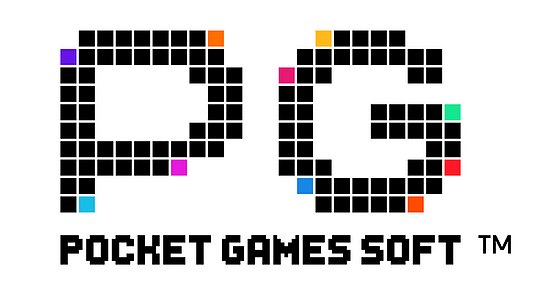สล็อตเว็บตรง ไม่ผ่านตัวแทน ของทางเรา ได้เป็น เว็บสล็อต อันดับ 1 ที่ได้มาตรฐานมากที่สุด หากผู้เล่นเลือกเข้ามาใช้บริการ สล็อต กับทางเรา รับประกันได้เลยว่า ผู้เล่นจะไม่มีทางผิดหวังกันอย่างแน่นอน เพราะทางเราได้มาพร้อมกับ ระบบความปลอดภัยที่ดีเยี่ยม เว็บสล็อต เชื่อถือได้ และระบบการทำงานที่เสถียรที่สุด รับประกันได้เลยว่าหากทุกท่านสมัครเข้ามาที่ สล็อตทรูวอเลท ฝากถอนเงินไม่มีขั้นต่ำ เลือกเล่น สล็อตออนไลน์ ได้เงินจริง ได้ทุกเกม
ใช้บริการที่ เว็บสล็อตใหม่ล่าสุด ของเรา ได้ทำการกรอกข้อมูลส่วนตัวของท่านเข้ามาข้อมูลส่วนตัวของท่าน จะไม่ถูกเผยแพร่ออกไปอย่างแน่นอน เพราะทาง เว็บสล็อตออนไลน์ ได้เงินจริง ของเรานั้น ได้ทำการอัพเดทระบบความปลอดภัยอยู่ตลอดทุกเดือน เพราะแบบนี้จึงทำให้ทาง สล็อตออนไลน์ เราได้รับความไว้วางใจจากผู้เล่นทั่วโลก สล็อตออนไลน์ ที่ดีที่สุด สามารถเข้ามา สมัครสล็อตเว็บตรง ที่ผู้ลเ่นจะได้รับความสนุกสนานเพลิดเพลินได้อย่างเต็มที่

ซึ่งทางเว็บไซต์ สล็อตเว็บตรง แตกหนัก ของเรา ก็มาพร้อมกับระบบการทำงานที่เสถียรที่สุด ที่ไม่ว่าผู้เล่นทุกท่านจะทำการเดิมพันเกมสล็อตออนไลน์ ได้เงินจริง ตัวใดก็ตาม รับประกันได้เลยว่า ขณะที่คุณทำการเดิมพันอยู่นั้น ผู้เล่นทุกท่านจะสามารถเล่นได้แบบไหนลื่น ไม่มีสะดุด และทางเว็บสล็อตออนไลน์ เชื่อถือได้ ของเรา ก็ยังได้รับการรับรองจาก ผู้เล่นทั่วโลกว่า มีเกมสล็อตแตกง่าย แตกบ่อย ให้เลือกเล่นมากมาย โดยมีค่ายเกมทั้งหมดที่นำมาให้บริการมากกว่า 15 ค่ายเกม
โดยมีค่ายเกมสล็อตที่ดีที่สุด ไม่ว่าจะเป็น JOKER GAMING ,PRAGMATIC PLAY , SLOTXO , SPINOMENAL ,PG SLOT และอื่น ๆ จึงเป็นแหล่งทำเงินที่ดีที่สุด ไม่ว่าคุณจะเป็นผู้เล่นมือใหม่ ที่ทำการเดิมพันครั้งแรกก็ตาม เพราะทุกตัวเกมสล็อตแตกหนัก แตกจริง ที่ทาง สล็อต pg เว็บตรง แตกหนัก 2023 เราได้ทำการคัดเลือกเข้ามานี้ ได้มาพร้อมกับอัตราการจ่ายเงินที่ง่าย และเรตในการจ่ายเงินที่สูงที่สุด เริ่มต้นเดิมพันได้ตั้งแต่ 1 บาท

PG SLOT ค่ายเกมสล็ตออนไลน์ ชื่อดังที่ไม่มีใครไม่รู้จักอย่างแน่นอน ซึ่งมีเกมสล็อตแตกหนักให้เลือกเล่นมากกว่า 100 เกม โดยทั้งหมดเป็นเกมที่สามารถทำกำไรได้จริง เกมสล็อตต่าง ๆ ถูกออกแบบมาเป็นอย่างดี มีความสวยงามน่าเล่นมาก ๆ

JOKER GAMING ค่ายเกมสุดมัน สร้างประสบการณ์ในการเล่นมากกว่าใคร และยังมีเกมสล็อตแปลก ๆ ให้เลือกเล่นเยอะมาก ๆ ทำให้คุณสามารถรับเงินจากการเล่นได้ง่าย ๆ ฟีเจอร์ต่าง ๆ ออกแบบมาให้ผู้เล่นตื่นเต้นได้เป็นอย่างมาก

หากต้องการเล่นสล็อตออนไลน์ ที่ดีที่สุด PRAGMATIC PLAY เป็นค่ายเกมที่ให้บริการมาอย่างยาวนาน ทำให้ผู้เล่นหลาย ๆ คนมั่นใจในการเลือกเล่นสล็อตกับค่ายเกมนี้ การันตีได้เลยว่าคุณจะได้เล่นเกมสล็อตออนไลน์ แตกง่ายแตกบ่อยที่มีคุณภาพมากที่สุด

SLOTXO มีให้บริการเกมาสล็อตสุดมันส์ ที่รวมเอาการเล่นเกมสล็อตออนไลน์ ได้เงินจริง ที่คุณจะต้องมีการวางเงินเดิมพัน ก็สามารถเข้าไปสร้างกำไรกับเกมสล็อตที่มีโบนัสต่าง ๆ โดยทั่วไปแล้วเกมจากค่ายนี้จะได้รับความนิยมมาก ๆ ในวัยรุ่น

SPINOMENAL หากต้องการเล่นสล็อตออนไลน์ ที่ดีที่สุด ค่ายนี้ก็เป็นอีกหนึ่งตัวเลือกที่ดีมาก ๆ เพื่อให้คุณสามารถสร้างความสนุกสนาน และเพลิดเพลินได้เป็นอย่างดี มีเกมสล็อตใหม่ ๆ ออกมาให้เลือกเล่นทุกเดือน ทำให้แฟน ๆ สล็อตไม่มีทางเบื่อ

JILI ที่แฟน ๆ สล็อตเข้าไปเลือกเล่นเยอะมาก ๆ ในช่วงเวลาที่ผ่านหน้า มีความแปลกใหม่ เพราะเป็นค่ายที่เปิดตัวมาไม่นาน แต่ก็มีเกมสล็อตแตกง่ายแตกบ่อยให้เลือกเล่นเยอะมาก ๆ และแต่ละเกมก็มีเนื้อหาที่น่าสนใจ และสามารถทำกำไรได้จริงอีกด้วย
หากผู้เล่นมือใหม่ท่านใดที่กำลังมองหา สล็อตทรูวอเลท ที่เปิดโอกาสให้ทดลองเล่นสล็อต ได้ฟรี ทางเราขอแนะนำให้ผู้เล่นทุกท่านเข้ามา ใช้บริการที่ สล็อตเว็บตรง ของทางเรา ที่เปิดโอกาสให้กับผู้เล่นมือใหม่ทุกท่านสามารถ ศึกษาวิธีการเล่นเกมสล็อตออนไลน์ได้ฟรีทุกตัวเกม ซึ่งทาง เว็บสล็อตออนไลน์ถูกกฎหมาย ของเรา ก็ได้รวบรวมเกมสล็อตออนไลน์ มาให้คุณเลือกเล่นมากกว่า 2,000 เกม รับประกันได้เลยว่า ผู้เล่นทุกท่านไม่ต้องทำการสมัครสมาชิก สล็อตเว็บตรง แตกง่าย 2022 ก็สามารถเข้ามาใช้บริการ ที่เว็บไซต์ของทางเรากันได้ในทันที
ซึ่งทาง สล็อต เว็บตรงไม่ผ่านเอเย่นต์ไม่มีขั้นต่ำ เราก็ได้รวบรวมค่ายเกมสล็อต ชั้นนำระดับโลกไว้มากกว่า 30 ค่ายเกม รับประกันได้เลยว่า หากผู้เล่นทุกท่านทำการเดิมพัน ที่เว็บสล็อตทรูวอเลทของเรา คุณจะสามารถกอบโกยเงินรางวัล กลับไปได้แบบมหาศาล และผู้เล่นทุกท่านจะไม่พบเจอกับ สล็อตออนไลน์ ที่มีรูปแบบการเล่น ที่มีความจำเจแม้แต่นิดเดียว เพราะทางเรานั้นได้ทำการคัดสรร เกมสล็อต ออนไลน์ ได้เงินจริง ใหม่ๆ เข้ามาอยู่ตลอด เพราะฉะนั้นแล้วผู้เล่นทุกท่าน ไม่ควรพลาดเว็บไซต์ที่ได้มาตรฐานมากที่สุด ในขณะนี้การโดยเด็ดขาด

วันนี้ทาง สล็อตเว็บตรง ของเรา จะมาทำการอธิบายวิธีการสมัคร เข้าใช้บริการที่เว็บไซต์ของเรา สำหรับผู้เล่นที่ต้องการเลือกเข้ามาใ ช้บริการกับทางเรา ทุกท่านก็สามารถเข้ามาสมัคร ใช้บริการได้เลยทันที เพราะทางเว็บไซต์ สล็อตออนไลน์ มือถือ ของเรา ได้มีขั้นตอนในการสมัครที่ไม่ยุ่งยาก
การันตีได้เลยว่า ผู้เล่นทุกท่านจะใช้เวลาในการสมัครสมาชิก ไม่เกิน 5 นาที อย่างแน่นอน และทางเราก็มีการอธิบายขั้นตอน ในการสมัครให้กับผู้เล่นทุกท่าน ซึ่งจะเป็นตัวช่วยคุณเข้าใช้บริการ ที่เว็บไซต์ สล็อตแตกง่าย ของเราได้แบบรวดเร็ว และจะมีขั้นตอนในการสมัครใดบ้างนั้น ไปดูกันได้เลย มีดังต่อไปนี้ ก็คือ

ขั้นตอนแรกในการสมัคร เข้าใช้บริการที่เว็บไซต์ของเรา ก็คือ ผู้เล่นทุกท่านจะต้องทำการ ค้นหาเว็บไซต์ของเรา และหลังจากที่ผู้เล่นทุกท่าน ได้เข้ามาที่หน้าเว็บไซต์ของเราแล้ว ก็จะมีเมนูให้คุณเลือกว่า สมัครสมาชิก ให้ผู้เล่นทุกท่านเลือกเข้าไปที่หน้านั้น
หากผู้เล่นทุกท่านได้เข้ามาที่ หน้าสมัครสมาชิกภายในเว็บไซต์ของเราแล้ว ขั้นตอนต่อไปที่ผู้เล่นทุกท่านจะต้องทำ ก็คือ ผู้เล่นทุกท่านจะต้องทำการ กรอกข้อมูลส่วนตัวของท่านเข้าไป ให้ครบถ้วนทุกข้อ เช่น ชื่อจริงนามสกุลจริง เลขบัญชีธนาคาร เบอร์โทรศัพท์มือถือเป็นต้น
หลังจากที่ผู้เล่นทุกท่านได้ทำการสมัครสมาชิก และได้ทำการกรอกข้อมูลส่วนตัวของท่าน เรียบร้อยแล้ว ทางเว็บไซต์ของเรา ก็จะทำการส่งรหัส otp เข้าไปในเบอร์โทรศัพท์มือถือ ที่คุณได้ทำการลงทะเบียนเข้ามาหลังจากนั้นคุณจะต้องทำการตรวจสอบว่า ข้อมูลที่ได้ลงทะเบียนเข้ามานั้น ถูกต้องครบถ้วนทุกข้อหรือไม่
หากผู้เล่นทุกท่านได้ทำการตรวจสอบแล้วว่า ข้อมูลที่คุณได้ทำการกรอกเข้ามานั้น ครบถ้วนถูกต้องทุกข้อเพียงแค่นี้ผู้เล่นทุกท่านก็สามารถทำการ ยืนยันการสมัครได้เลย และผู้เล่นทุกท่านก็สามารถ ล็อคอินเข้าใช้บริการที่เว็บไซต์ของเรา กันได้เลยทันที
สำหรับคนที่ต้องการเข้าเล่น สล็อตเว็บตรง ไม่ผ่านเอเย่นต์ ของเรา สามารถเข้ามาฝากเงินผ่าน สล็อตทรูวอลเลท ฝากถอนไม่มีขั้นต่ำ มีเงิน 1 บาทก็สามารถเข้าไปเลือกเล่นได้เลย เพื่อให้นักพนันสามารถเข้ามาเล่นได้ง่าย ๆ สำหรับคนที่ต้องการฝากเงินระบบที่ปลอดภัย สล็อตทรูวอลเลท ถือเป็นอีกหนึ่งทางเลือกที่ดีที่สุด และเว็บของเรายังมีบริการฝากเงินอื่น ๆ อีกมากมายอีกด้วย
หากต้องการเข้าถอนเงิน ก็สามารถถอนเงินผ่าน ทรูวอลเลทได้อีกด้วย หรือจะถอนเงินผ่านบัญชีของคุณเองโดยตรง เว็บสล็อต อันดับ 1 ของเราสามารถเข้ามาฝากถอนเงินในระบบที่ดีที่สุด ที่ผู้เล่นทุกคนจะได้รับความประทับใจ หากต้องกเล่น สมัครเว็บสล็อต FAFA456 ของเราผ่านเว็บนี่ได้เลย จะนำคุณไปยังเว็บหลังเพื่อเล่นเกมสล็อตแตกง่าย แตกบ่อย ใหม่ล่าสุด 2024


ทาง สล็อตเว็บตรง ไม่ผ่านเอเย่นต์ ของเรา ได้เป็นเว็บไซต์ที่ได้มาตรฐานมากที่สุด เพราะทางเราได้มาพร้อมกับระบบเทคโนโลยี ที่มีความทันสมัย และระบบการทำงานที่เสถียรที่สุด ไม่ว่าผู้เล่นทุกท่านจะเข้ามาใช้บริการที่ เว็บสล็อตใหม่ล่าสุดเว็บตรง ของเรา ช่วงเวลาใดก็ตาม รับประกันได้เลยว่า ขณะที่คุณทำการเดิมพันนั้น ทุกท่านจะสามารถเล่นได้แบบไหลลื่น ไม่มีสะดุด และผู้เล่นทุกท่านจะไม่พบเจอกับ ระบบเทคโนโลยีที่มีความล้กสมัยแม้แต่นิดเดียว เพราะทางเราได้มีการอัพเดท ระบบอยู่ตลอดทุกเดือน ซึ่งทางเว็บไซต์ของเรา ก็เปิดโอกาสให้กับผู้เล่นมือใหม่ทุกท่านสามารถ ทดลองเล่น เกมสล็อตครบสูตร 2023 ได้ฟรีทุกตัวเกมอีกด้วย
หากผู้เล่นทุกท่านเลือกเข้ามา ใช้บริการที่เว็บไซต์ของเรา และไม่ว่าคุณจะทำการเดิมพัน เกมสล็อตออนไลน์ตัวใดก็ตาม ทางเราพร้อมการันตีได้เลยว่า คุณจะสามารถทำกำไรกลับไปได้เป็นอย่างดี เพราะทุกตัวเกมสล็อตที่ทางเราได้ทำการคัดเลือกเข้ามานี้ เป็นเกมสล็อตลิขสิทธิ์แท้
ทางเว็บไซต์ของเรานั้น เปิดโอกาสให้กับผู้เล่นทุกท่านสามารถ เข้ามาสร้างรายได้เสริมที่เว็บไซต์ของเรากันได้แบบเท่าเทียม โดยที่ผู้เล่นทุกท่านสามารถ ทำการฝากถอนเงินได้แบบไม่มีขั้นต่ำ ไม่ว่าคุณจะมีเงินลงทุนกี่บาทก็สามารถ เข้ามาใช้บริการได้เลยทันที
ทางเว็บไซต์ของเรา พร้อมรับประกันได้เลยว่า หากผู้เล่นทุกท่านได้เลือกเข้ามา ใช้บริการที่เว็บไซต์ของเราและไม่ว่าคุณจะเข้าใช้บริการช่วงเวลาใดก็ตาม จะสามารถเข้าใช้บริการได้แบบปลอดภัย เพราะทางเว็บไซต์ของเรา ได้เป็นเว็บไซต์ที่ถูกต้องตามกฎหมาย